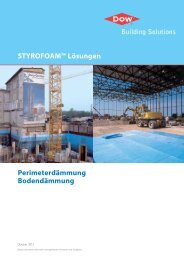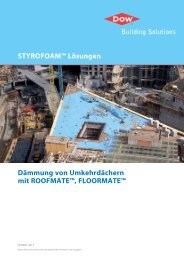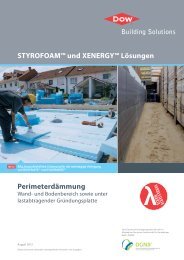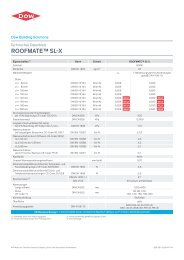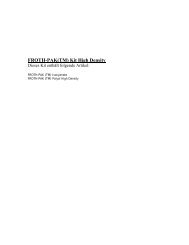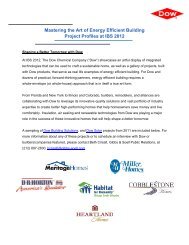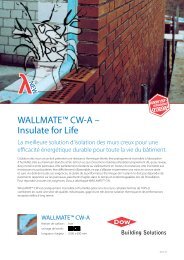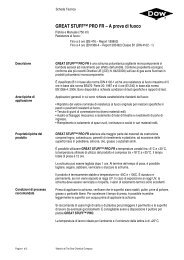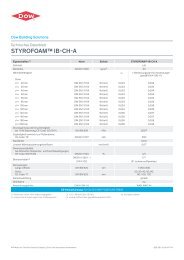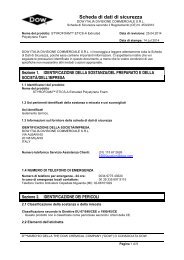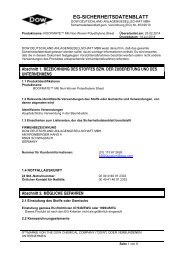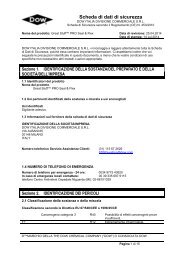Insulating Inverted Flat Roofs with STYROFOAM - Dow Building ...
Insulating Inverted Flat Roofs with STYROFOAM - Dow Building ...
Insulating Inverted Flat Roofs with STYROFOAM - Dow Building ...
- No tags were found...
You also want an ePaper? Increase the reach of your titles
YUMPU automatically turns print PDFs into web optimized ePapers that Google loves.
<strong>Insulating</strong> inverted roofsBasic principlesThe performance and longevity of flat roofs dependsupon many factors, including the position of theinsulation <strong>with</strong>in the construction.If insulation is placed below the structural deck (coldroof construction) the structure remains cold and thereis a considerable risk of condensation; for that reasoncold deck roofs are seldom used.Insulation placed above the structural deck andbeneath the waterproof layer (warm roof construction)reduces the risk of condensation but, because thewaterproof layer is thermally isolated from the rest ofthe roof construction, it is exposed to wide temperaturefluctuations <strong>with</strong> consequent increased risk ofpremature failure (Figure 1).The inverted roof concept overcomes the problem byplacing thermal insulation above the waterproof layer,maintaining it at an even temperature close to that ofthe building interior and protecting it from the damagingeffects of UV radiation and from mechanical damage.The insulation protects the waterproof covering from:››› wide temperature variations +80 to -20°C››› degradation from weathering››› mechanical damage during construction, use andmaintenanceThe waterproof layer acts as a total vapour controllayer and, being on the warm side of the insulation, ismaintained above dew point temperature so the risk ofcondensation is eliminated.Temperature ˚C40302010protectedmembrane0unprotected membrane-10J F M A M J J A S O N DThe inverted roof concept has other benefits. Theinsulation can be:››› installed in any weather››› added to, <strong>with</strong>out stripping the waterproof layer››› easily lifted and replaced/re-used if the building isalteredThe insulation for an inverted roof must:››› resist water absorption››› be unaffected by freeze/thaw cycles››› <strong>with</strong>stand surface traffic››› protect the waterproof layer long term››› be ballasted to prevent flotation››› be protected from UV and mechanical damage.General recommendations on the design of flatroofs are contained in BS 6229.Figure 1: Temperature fluctuations in an unprotected roofcovering compared <strong>with</strong> those in one protected by <strong>STYROFOAM</strong>3



